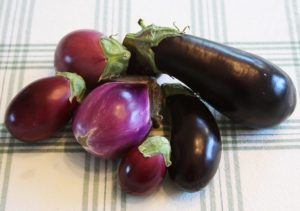Aug. 20 Column: When to Harvest Vegetables

We’re all in the thick of harvest season, aren’t we? Are you a newbie vegetable gardener or a seasoned veteran? Well, the timing of when to harvest vegetables can be tricky at times.
But don’t worry, I’ve got you covered! In my column in today’s edition of The Spokesman-Review, I do my best to take the mystery out of it. You’ll learn the most ideal time is for picking the fruits of your labor. Here is a link to my column: A guide to let you know when it’s the right time to harvest. (or you can read my column lower in this post)
There’s additional information on when to harvest vegetables in this week’s video. I didn’t have room in my column to cover peppers, garlic and tomatoes, so you’ll find them in the video.
I don’t know about you, but I’m very visual when it comes to learning new things. So I thought it would help if I showed you what I was talking about in my column. Take a look:
Harvest Vegetables garden column:
by Susan Mulvihill
Is this is the first time you’ve grown a vegetable garden? You just might be wondering when to harvest some of the produce. It’s not tricky knowing when to pick lettuce, spinach or radishes. However, there are several types of veggies that can be downright mystifying. My job today is to let you in on the secrets of the best time to harvest them.
For many vegetable crops, picking them while they’re young and tender is the key. This applies to peas, beans, lettuce and other salad greens, and certainly to zucchini and other types of summer squash.
When to harvest peas and beans:
Peas come in three types: snap, edible pod and shelling. Pick the first two types while the pods are small since they will be tender and the most flavorful. When it comes to shelling peas, you need the pods to fill up with peas. Don’t wait until the individual peas are huge and the pods are rubbery, though. Young peas are the sweetest when eaten fresh off the vine or steamed.
Bush and pole beans should be harvested young as well, before you notice large bumps. Those are the seeds developing inside. Two other types of beans are the exception to this rule. Those are broad beans like fava beans and shelling beans grown for drying.
Harvesting corn at the right time:
Knowing when to harvest corn might seem confusing but the ears provide some clues. First, the silks that emerge from the tip of the ear should be completely dry. Second, the tip of the ear should feel a bit rounded and full with kernels. If you’re still feeling hesitant, carefully peel back the ends of a couple of the leaves surrounding the ear. See if the kernels look developed.
Eggplants are tricky!
In the past, I’ve felt unsure about when to harvest eggplants. Fortunately, experience and research has clued me in on the timing. The skin of a mature eggplant should be very glossy. I would tell you also to look for the skin to be deep purple in color. However, there are so many different types and colors now, it only holds true for the classic eggplants.
When onion stalks fall over, they’re letting you know that they’re finished growing. Gently pull them up out of the soil and stop watering them. Either let them dry out in place or move them to a sheltered area. Keep them there until the outer skin is papery dry so you can store them.
Melons: The signs to look for
What about melons? I grow them every year because they are so much tastier than store-bought types. That’s because those melons have been harvested way too early. The secret to picking perfectly ripe melons is to wait until they start separating from the vines. The rind should also have some color to it; for example, cantaloupes should have a pale orange tint. You might also notice some yellow jackets buzzing about your patch. They’re no dummies, they can smell the sweet, ripe flesh and want a piece of the action, too. Knowing when winter squash and pumpkins are ripe involves the “thumbnail test.” Press your thumbnail into the skin. If it easily cuts through it, the squash or pumpkin isn’t ripe. If you can’t cut through the skin, it’s ready to be picked. The stem should also look golden rather than green, and the skin should be a mature color. I prefer to leave my squash and pumpkins out in the garden until we start getting frosts.

